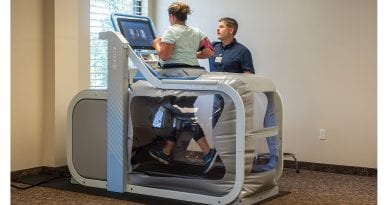Today, Companies Must ‘Meet People Where They Are’
A Changing Dynamic
By Amy Roberts
It is no secret that the workplace has changed significantly over the past several years, requiring employers to adjust their operating principles to keep pace with what employees need and want. While many have labeled this time as the Great Resignation, this movement might better be explained by the term the Great Re-evaluation!
For whatever the reason, and there have been plenty in these last few years, people are re-looking at how they work, what they do for work, and the impact their work has on the world around them. Employees expect that their job brings purpose to their lives and expect an employer to help them meet this need. If they review their current job and don’t find the connection with their own purpose, they are leaving for a role in an organization that they feel can provide them with this crucial requirement.
When attracting candidates and holding on to talent, Employers are being challenged to improve their impact on just about everything. The people they employ, the people they serve and the value they bring to the greater good. This challenge has led many employers to look at their impact on the world and revamp their entire value system in order to compete.

“Employees expect that their job brings purpose to their lives and expect an employer to help them meet this need. If they review their current job and don’t find the connection with their own purpose, they are leaving for a role in an organization that they feel can provide them with this crucial requirement.”
Attractive benefit programs and competitive pay will only get an organization so far in an evolution of their value. Organizations have to consider more broadly their impact on the lives of people. All the people! Not just the people who buy their products or services or their shareholders or the people that work for them. This means caring about the communities in which they are a part and also caring about the world beyond their headquarters, subsidiaries, and offices.
While there are many ways to create an employer value proposition that helps an organization stand out and compete for talent, perhaps the most impactful is to establish a corporate purpose that considers the company’s role and contribution to society. In the development and communication of this purpose an organization can articulate their value to an employee and in turn attract people who see value in being a part of the work being done by the organization.
Once established it is critical to provide employees with meaningful ways to reflect on the company’s efforts and their impact as well as ways to participate in these efforts. In other words, employees want to be a part of a company that strives to make the world a better place and they want to do the work that helps to make it so.
Another aspect for employers to consider is how work gets done within the organization and the systems and structure around work. While more a practical component of an employer value proposition than a corporate purpose, this area of work has become increasingly scrutinized by the workforce. People want to be challenged in their work, excited by the mission of an organization, and contribute to the outcomes of the organization in a way that makes sense for them.
In order to do this, an employer has to consider the person doing the work as an important aspect of how the work will be done. This represents a huge paradigm shift in workforce planning and it requires an organization to examine its policies and procedures of work to determine how to go about this in a consistent and sustainable way.
We all know it would be impossible for an organization to design its work structure to handle all of the elements of a person, so one approach an employer can take is to set some basic tenets of how work gets done, usually in the form of establishing goals and outcomes required of each role in the organization and then be flexible enough to meet people where they are when it comes to how that work gets done. This can look different depending on the organization type and can vary even within an organization depending on the position. Flexibility in the workplace isn’t new, but the fact that it is a requirement for many people in the workplace has caused many organizations to rethink work hours, days of work, and the location of work.
In different times companies were doing great things to provide an inviting and calm workspace with nice desks, décor that complimented the values of the organization and convenience amenities like a café, gym or dry cleaner. Now an employer is seriously considering four-day work weeks, 35-hour schedules, remote work, hybrid work, work from anywhere, and unlimited time off, just to name a few.
The stakes are higher than ever to implement programs that provide an organization with the desired outcomes to be successful in a way that allows employees to live a meaningful and well-balanced life.
Amy Roberts is executive vice president and chief human resources officer at PeoplesBank.


